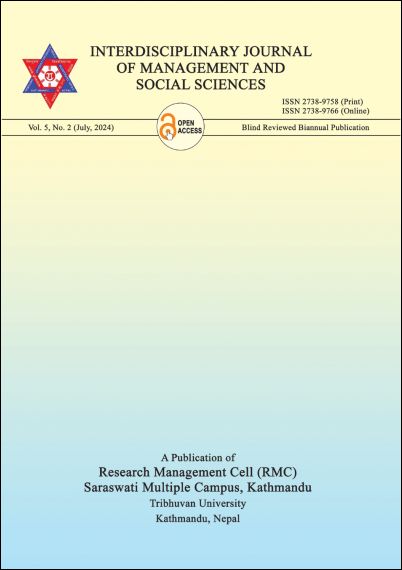Tax Evasion and Avoidance: Empirical Insight from Nepal
DOI:
https://doi.org/10.3126/ijmss.v5i2.69460Keywords:
Taxation, tax evasion, tax avoidance, tax reduction, tax burden, compliance failureAbstract
Taxation is a benefit given to the government to assist the government in meeting the requirements of the people. Tax evasion, on the other hand, is the act of failing to pay taxes by illicit means. Taxation is a mandatory public contribution that is the fundamental source of government revenue. Tax evasion is an illicit conduct that causes income disparity and halts the economy, resulting in economic instability. Tax evasion is often associated with the shadow sector. Income disparity expands the tax gap or the total amount of an individual's unidentified income. This is the difference between the amount required to be reported and the amount reported. This article aims to comprehend better the relationship between government tax income and tax evasion. In contrast, the article explores the concept of tax evasion and discusses how an individual or an organization of businesses might properly use tax regulations to decrease their taxable income. Both activities fall into a category that makes a state's tax structure unfair. Furthermore, tax avoidance and evasion reduce the government's revenue sources, with the latter drastically reducing revenue income. According to the investigations, most people view paying taxes as an inconvenience, even though the amount of tax is substantially less large. This might be because taxpayers view that the taxes they pay are not being used efficiently by the government and that the tax rate is overbearing.
Downloads
Downloads
Published
How to Cite
Issue
Section
License

This work is licensed under a Creative Commons Attribution-NonCommercial 4.0 International License.

